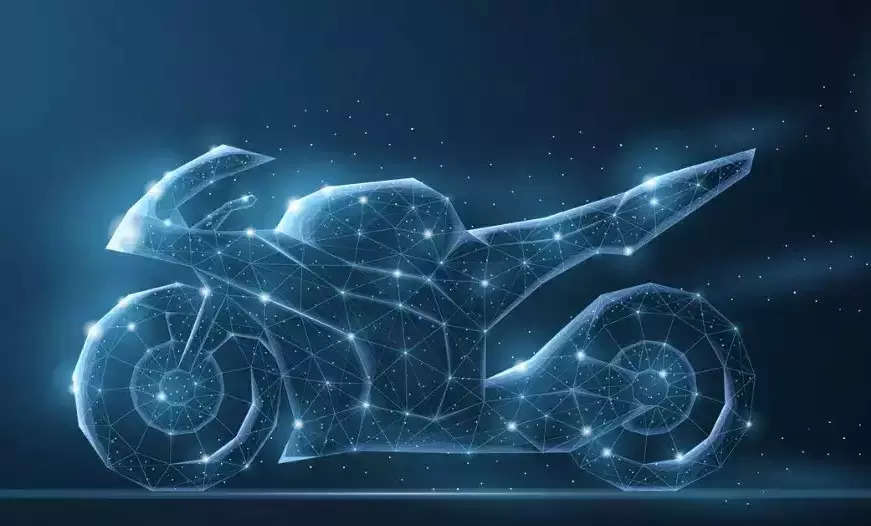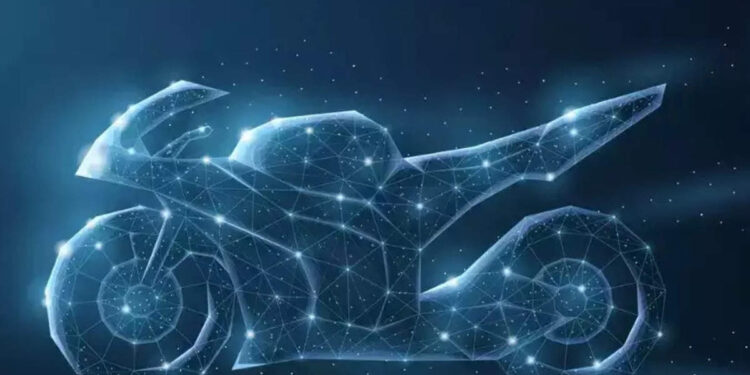
New Delhi: Software technology penetration into the automobile has reached a level where the vehicle’s identity or character is now getting software defined. And, that can also make it much more complex than what it was as a mechanical machine. At TVS Motor, the driving idea is to “keep it simple” with its ‘North Star’ SDV architecture.

“With electric, electronics, you can do lots of things. It can be overly complicated. and it can overwhelm the customer. And it can also overwhelm the engineering organisation,” says Dr. Bernhard Heiming, in his first sit-down interview after taking on his current role of CTO, TVS Motor last year. Simply put, the architecture puts one computer each on both ends of the two-wheeler, one as an infotainment controller, and the other as the vehicle controller.
“With this simple system, you can achieve a lot. Don’t overcomplicate electrical/electronic and software,” says Dr. Heiming. The electrification megatrend is the single largest driver for softwarisation in automobiles, and two-wheelers have seen a major influence as the segment is getting electrified at a faster pace. And since EVs are more connected to the outside world, naturally software content in them is more than in ICE (Internal Combustion Engine) vehicles.
However, the ICE vehicles can also benefit from this trend since they also have an engine control system, and digital instrument cluster. Offering connectivity in them then becomes easy. “So, then we have in both worlds – ICE vehicles and EVs, an electronic and software platform where we can build on. Then the next step is to add future systems and sensors which a customer will appreciate and will help,“ explains Dr. Heiming.
Tech migration from cars to two-wheelers
The technologist, who also has had stints with major car OEMs like Ford, Porsche, and Jaguar Land Rover (where he was Chief Engineer Electrical/Electronic, Connected Car and Infotainment), says technology migration from cars to two-wheelers will happen as the industry evolves. Today, many cars use a mix of camera, ultrasonic sensors, radar, lidar technologies, primarily for its ADAS (Advanced Driver Assistance System) suite.
“This full equipment is of course, for the endgame in cars, autonomous driving. I am not saying two wheelers are already there. But elements of these sensors and the capabilities can be used to help the customer,” says Dr. Heiming. Using some of the elements, like a camera, and infrared LED in a two-wheeler, possibly a TVS scooter/motorcycle, would lead to much better visibility especially in the night, and mirroring it into the helmet screen though connected tech would be a “dramatic help” for the rider.
The challenge though is that the autonomous driving technology elements in cars are way too expensive to be adopted for two-wheelers. “So we need to choose the right systems. And we need to also tailor them to the cost levels of a two wheeler, in a positive sense,” says Dr. Heiming. The idea is to make the technology affordable enough for the customer to buy, and appreciate. While making efforts in achieving that, Dr. Heiming is also clear that “we don’t want to make them cheap and ugly”.
Autonomous tech in two-wheelers
Like in the car industry, it’s technically possible to build an autonomous riding two-wheeler. Global two-wheeler majors like Yamaha and BMW have demonstrated self-riding prototypes.But, an autonomous two-wheeler is “not common sense” and there’s no great customer benefit to offer it yet, according to Dr. Heiming. However, Dr. Heiming says, “we are looking also in all sorts of directions in these technologies”.
Off the vehicle, in the Cloud
While the ‘North Star’ is an in-vehicle programme, TVS Motor has also developed an off-board data platform called TVS Cloud. The OEM, which launched the country’s first connected scooter NTorq, over 6 years ago, has two key objectives behind it. One is to be “much faster” to do software updates in its vehicles, and to have applications which require higher computational power than what the vehicle can have.
“Once a customer has downloaded maybe a video from the vehicle, do some rendering on it, store it or do an analysis of the ride, those kinds of heavy computational power applications can, should, and will run in the cloud,” says Dr. Heiming. Such features could yield dividends in the premium motorcycle segment primarily.
With all the software technology led advancements happening in the industry, which is entering the SDV era, OEMs are prepping up with a stronger focus on building software technology prowess too. And, as that happens, it is very crucial, as Dr. Heiming also says, for organisations to take the right calls about what to make in-house, and what to buy.
The seasoned engineer also sees software defining not only the vehicle, but a brand’s DNA too, as software can be a ‘key enabler’ for a ‘technology leader’ to differentiate from a ‘fast follower’, and ‘buying excellent algorithms from Tier 1 suppliers will no longer be possible’.

















